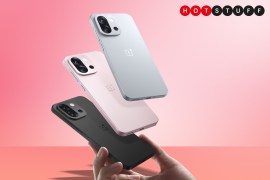Samsung Galaxy S25 vs Galaxy S24: what’s the difference?
Wondering whether this year's Galaxy is worth the upgrade?
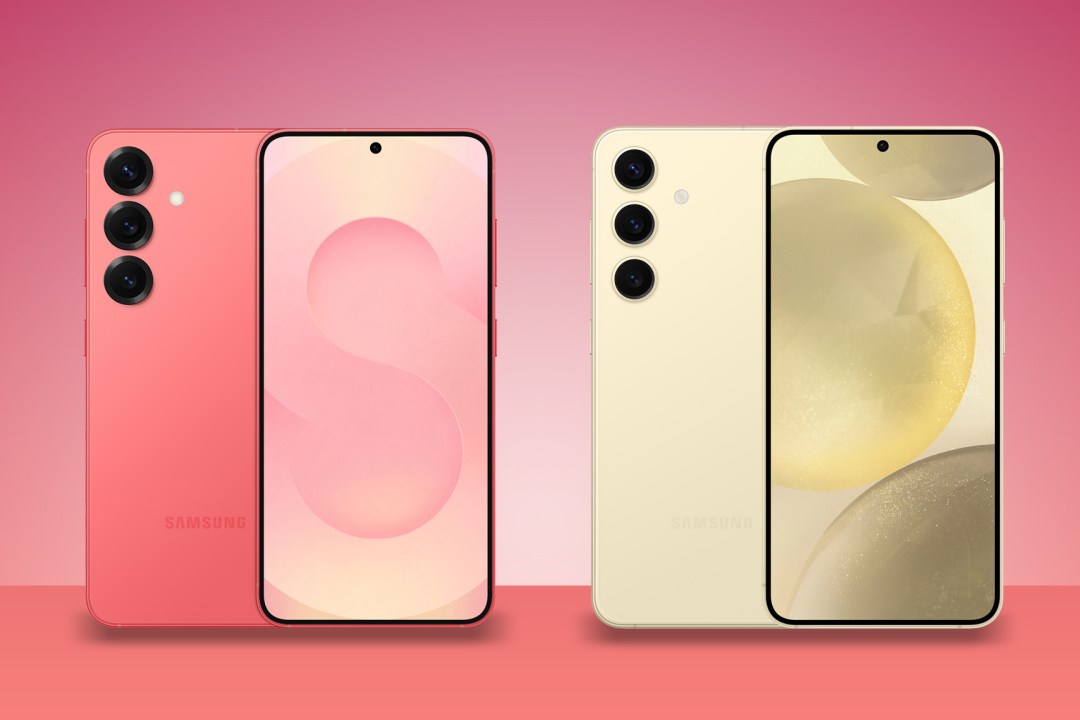
Samsung has finally pulled back the curtain on its latest trio of flagship Galaxy phones. The S25 Ultra still leads the way, with the S25+ occupying the middle ground for those after a big screen for (slightly) less cash. The Galaxy S25, meanwhile, continues to fly the flag for compact hero phones.
However, with Samsung seemingly focused on upping its AI game for 2025, the spec sheet doesn’t seem to show any major upgrades over last year’s Galaxy S24. Does that mean the successor isn’t worth your attention? Here’s how the two stack up on paper, ahead of a full review a little closer to launch.
How we test smartphones
Every phone reviewed on Stuff is used as our main device throughout the testing process. We use industry-standard benchmarks and tests, as well as our own years of experience, to judge general performance, battery life, display, sound and camera image quality. Manufacturers have no visibility on reviews before they appear online, and we never accept payment to feature products. Find out more about how we test and rate products.
Price
Samsung has opened Galaxy S25 pre-orders now, and the phone will start shipping on the 7th of February. You’ll have to part with $799 / £799 for the 128GB model, $859 / £859 for the 256GB model, and $979 / £979 for 512GB.
Samsung hasn’t increased its launch pricing since the Galaxy S24, which also retailed for $799 / £799 and $859 / £859 for the 128GB and 256GB models respectively. While other markets got a 512GB model, it wasn’t officially sold in the UK. Of course, you can now find this year-old phone for considerably less cash: around $550 / £550 seems to be the going rate at the time of writing.
You can find the best prices for the older Samsung Galaxy S24 below:
Samsung Galaxy S25 vs Galaxy S24 Specs
Here’s how the two generations compare on specs:
| Galaxy S25 | Galaxy S24 | |
| Screen | 6.2in, FHD+ 2340×1080, 1-120Hz, 2600 nits | 6.2in, FHD+, 1-120Hz, 2600 nits |
| CPU | Snapdragon 8 Elite for Galaxy | Snapdragon 8 Gen 3 for Galaxy / Exynos 2400 |
| Memory | 12GB | 8GB RAM |
| Cameras | 50MP + 10MP +12MP rear 12MP front | 50MP + 10MP + 12MP rear 12MP front |
| Storage | 128/256/512GB | 128/256/512GB |
| Battery | 4000mAh | 4000mAh |
| Charge speed | 25W wired, 5W wireless | 25W wired, 5W wireless |
| Durability | IP68 | IP68 |
| Dimensions | 147x71x7.2mm, 162g | 147x71x7.6mm, 167g |
Design & display: ring in the new year

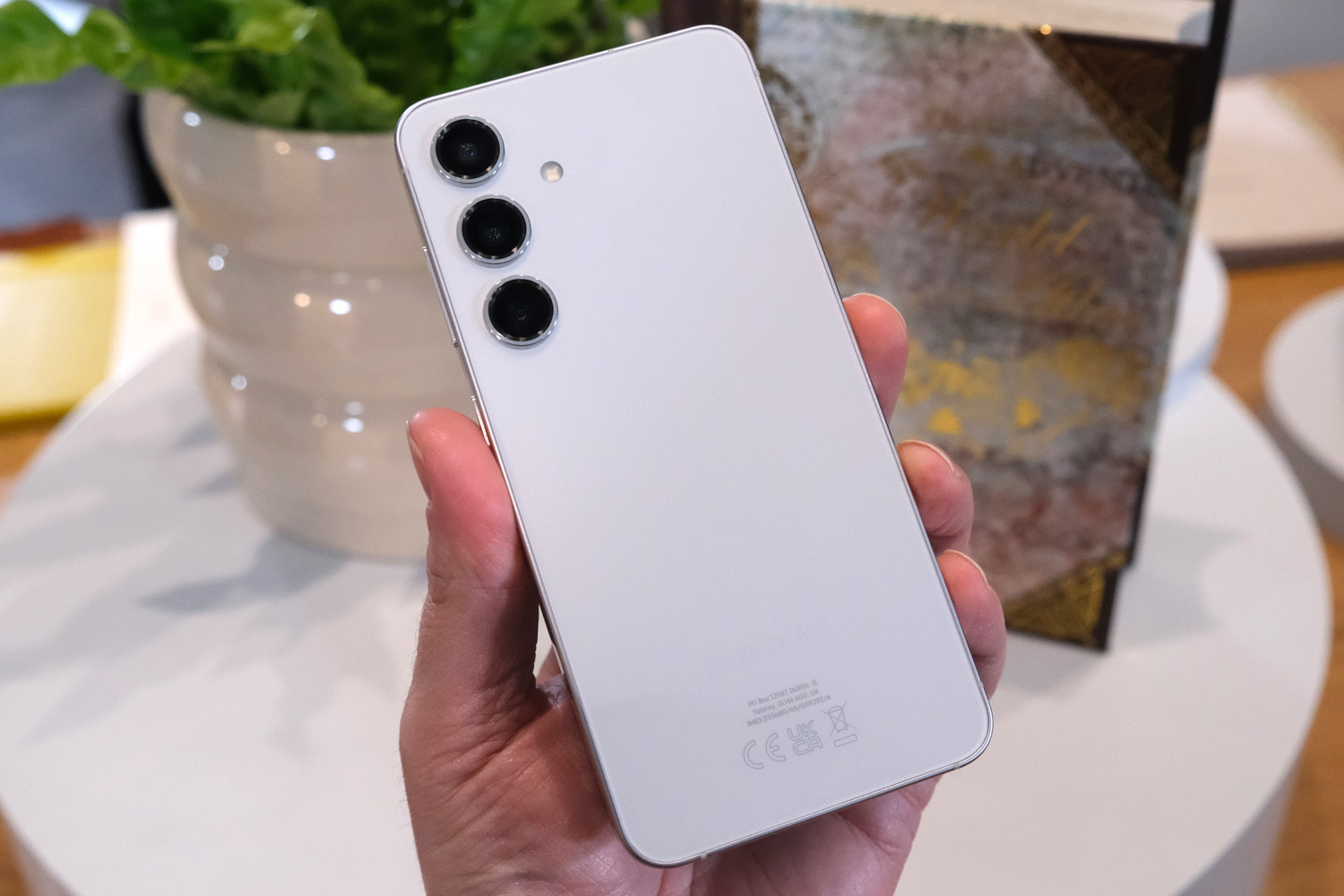
This year’s Galaxy has seen the bare minimum of changes to set it apart from last year’s model. The S25 has the same flat display, flat Armour Aluminium frame, and flat rear glass as the S24, except here the three rear camera lenses have been tweaked with black trim instead of body-matching surrounds.
Dimensions are almost identical, with the new model being just a tad thinner (7.2mm vs 7.6mm) and lighter (162g vs 167g). The Galaxy S25 will be available in Navy, Ice Blue, Mint and Silver colours, plus a bunch of online exclusives you won’t find outside of Samsung’s web store. That’s a big shake-up from the four Galaxy S24 offerings – Cobalt Violet, Amber Yellow, Onyx Black and Marble Grey. It’s possibly the first time you’ve not been able to buy one in black.
Elsewhere, Samsung hasn’t changed up the Galaxy S25’s screen. It has the same 6.2in AMOLED panel as the Galaxy S24. That means an identical 2340×1080 resolution, matching 1-120Hz dynamic refresh rate, and the same 2600 nits peak brightness. Both are protected by Corning Gorilla Glass Victus 2. The screen bezels are unchanged, too.
Performance & battery: generational jump
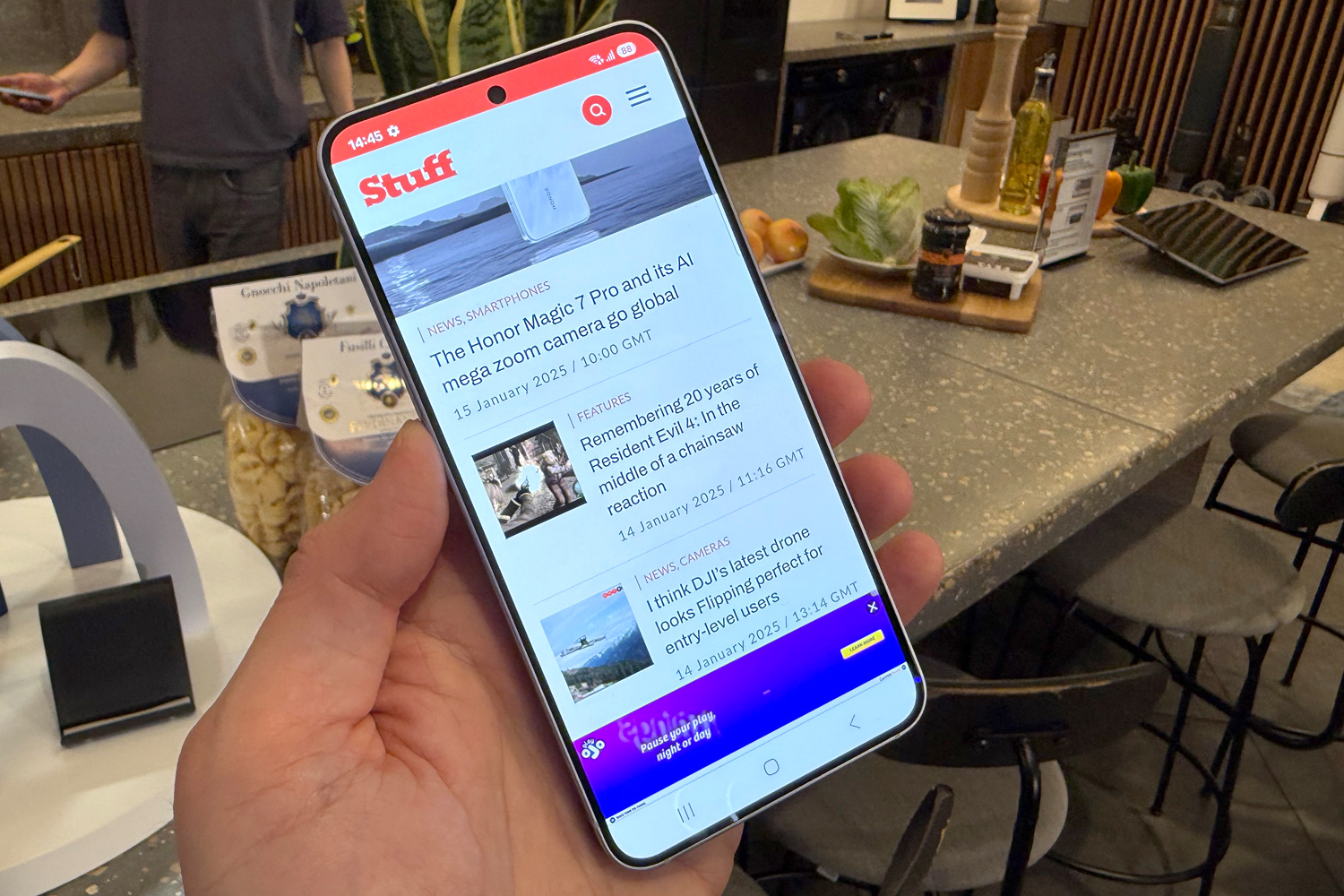
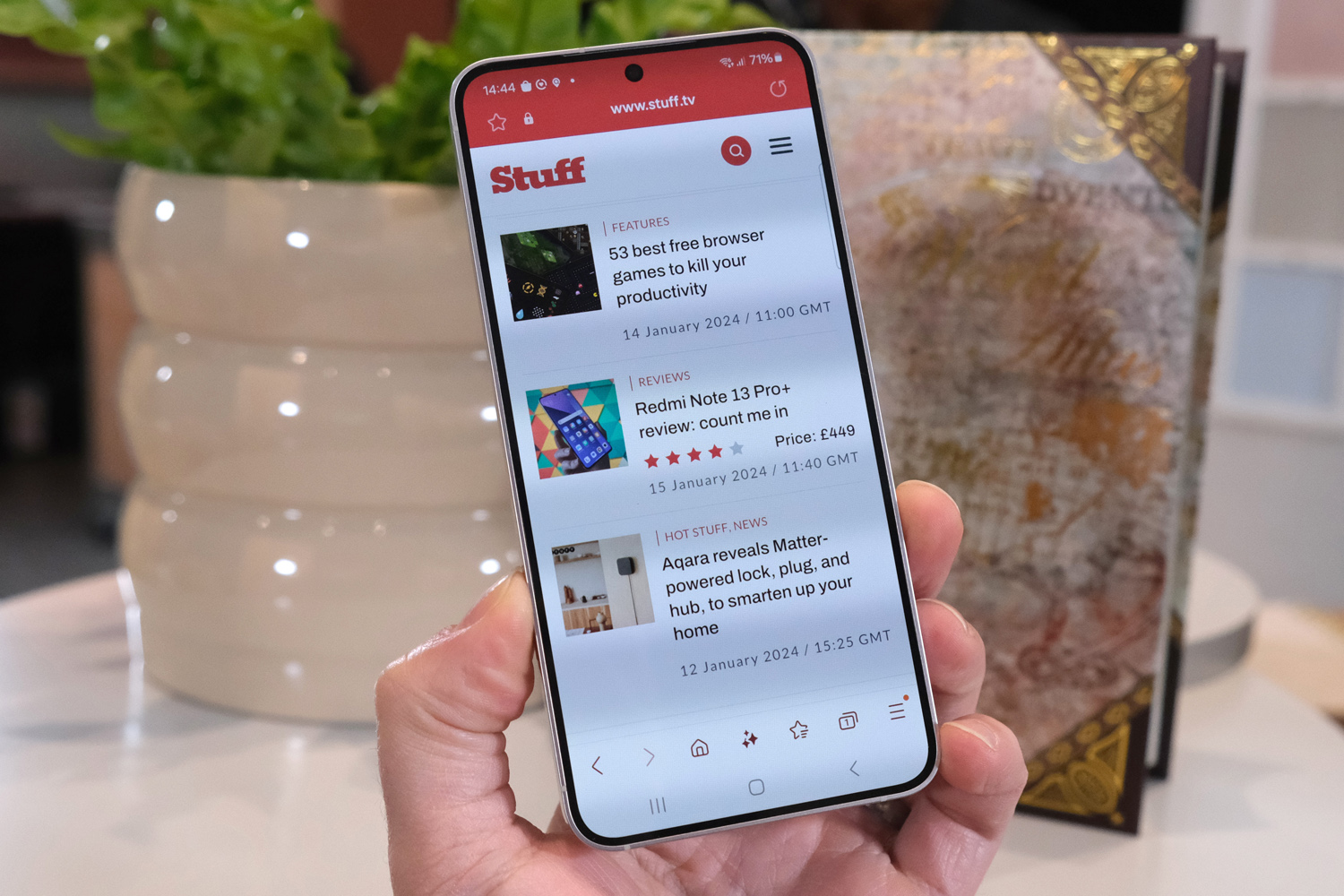
This year’s Galaxy phones all use Qualcomm internals, no matter where you live in the world. The S25 has the same Snapdragon 8 Elite for Galaxy chip as the S25+ and S25 Ultra, and it comes with 12GB of RAM across the board, regardless of which storage capacity you go for.
With no benchmark results to go by ahead of launch, it’s tough to say how much of a performance improvement we can expect over the Galaxy S24 – though the regular version of the Snapdragon 8 Elite is roughly 15-20% faster than its predecessor in other phones I’ve tested this year. It’s also made on a thinner 3nm process, which should make it more power efficient.
The Galaxy S24 got a Snapdragon 8 Gen 3 for Galaxy chip in the US, but an Exynos 2400 in other territories. The latter wasn’t as quick and didn’t last as long per charge, making it a lot less appealing. Most versions came with 8GB of RAM, too.
Both phones are in line to get a promised seven years of new Android generations, along with seven years of software support. The Galaxy S24 only has six years left, while the S25 will carry on until 2032.
Battery capacity and charging speeds are unchanged between generations. That means you’ll get a 4000mAh cell good for 25W wired or 5W wireless refuelling. The more efficient CPU might help give the Galaxy S25 a little extra life between top-ups, but it won’t be much.
Both phones look pitiful compared to rivals out of China, like the Vivo X200 Pro Mini and its 5700mAh silicon-carbon battery that can charge at a heady 90W wired or 30W wireless.
Cameras: moving on
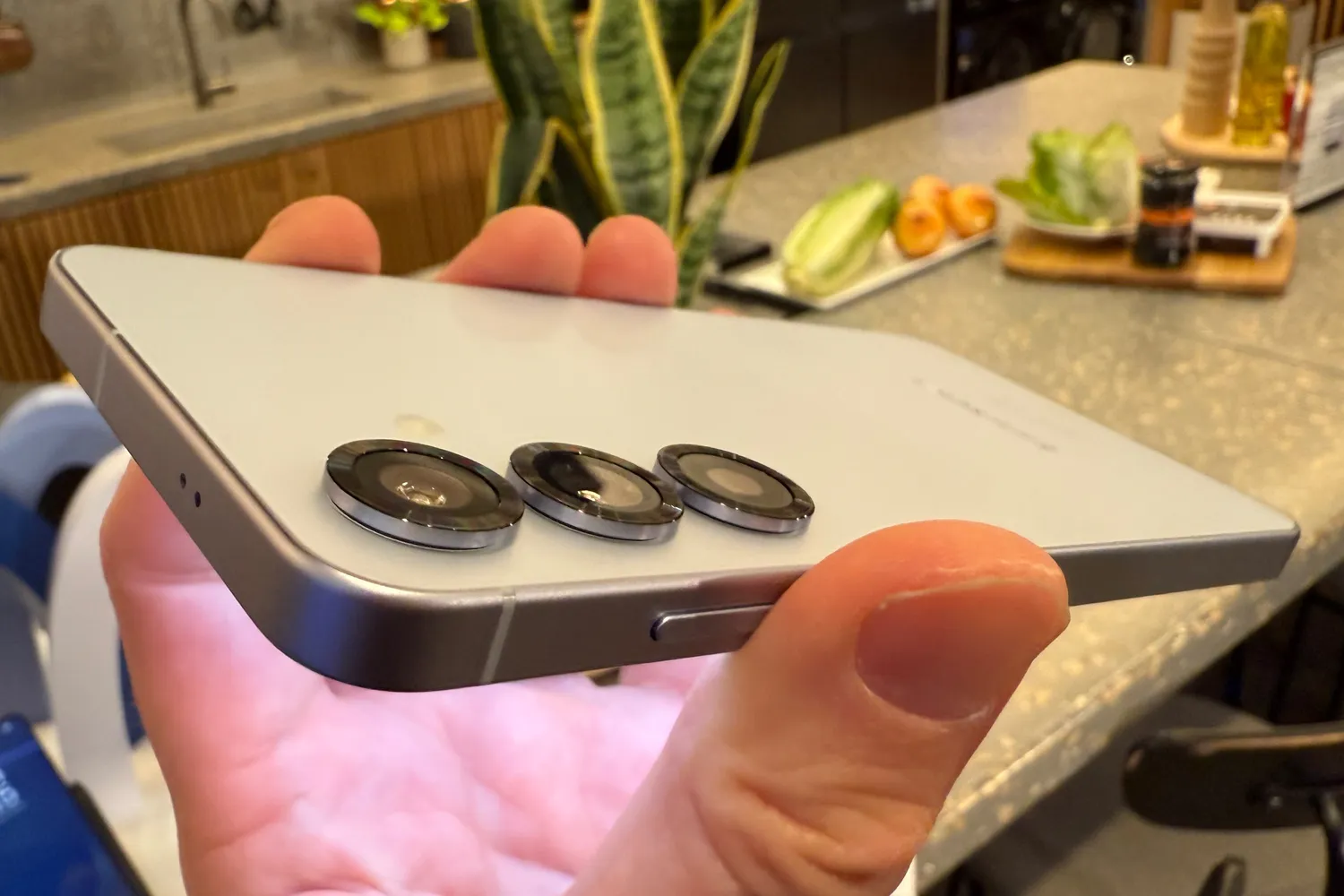
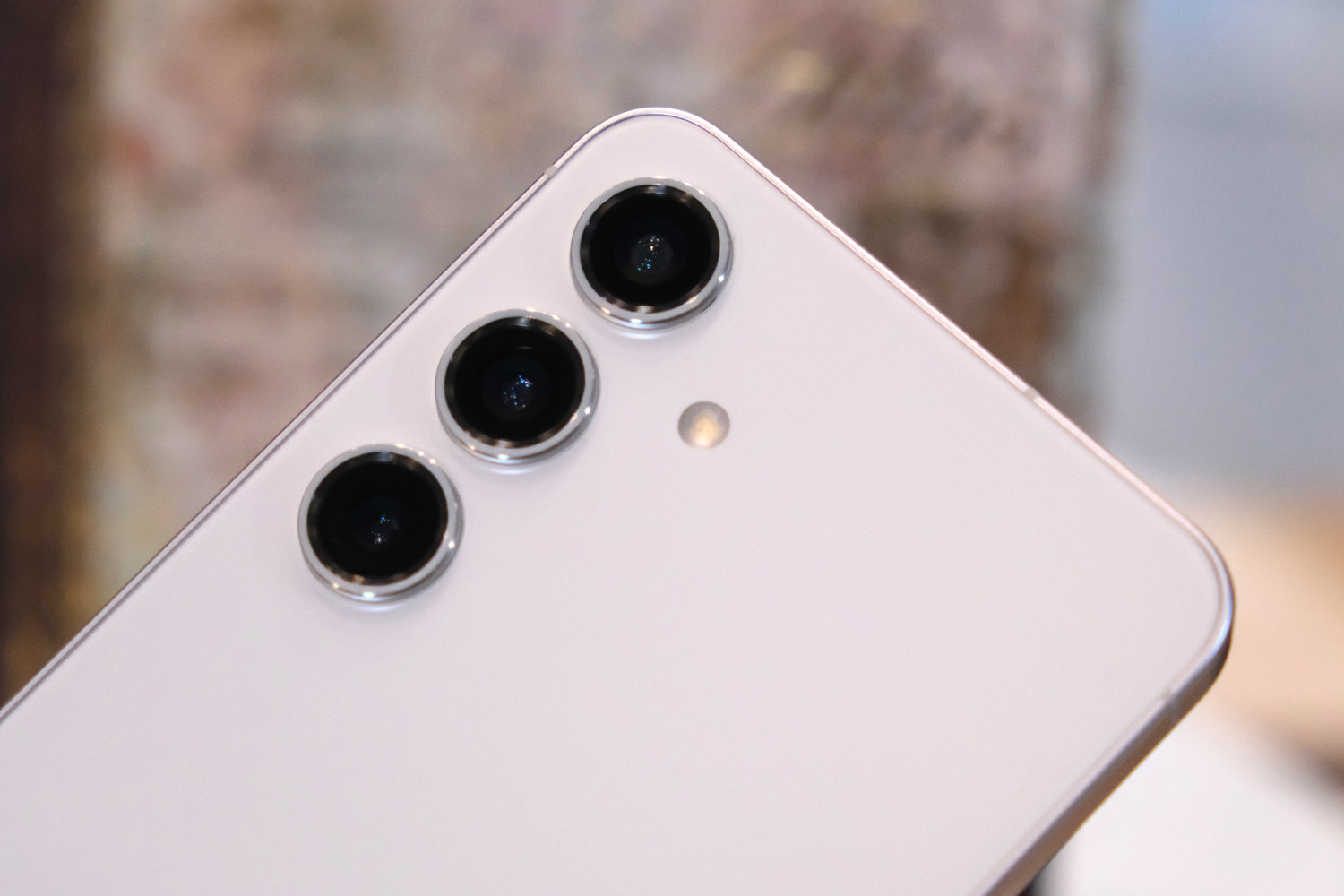
On paper, there’s nothing to separate the two Galaxy generations here. Both have a 50MP lead lens with f/1.8 aperture, dual-pixel phase detect autofocus and optical image stabilisation. The 10MP, f/2.4 telephotos are also identical, with PDAF, OIS and 3x optical zoom. The 12MP, f/2.2 ultrawide is unchanged too, with a 120 degree field of view but no autofocus for macro shooting. Video tops out at 8K/30fps, with 4K/60 and 1080p/240 slow motion recording.
Up front it’s a similar story, with each getting a 12MP, f/2.2 selfie camera that has dual pixel PDAF.
The newer phones gets a few extra software modes and editing tools to play with, but I’d expect them to make their way to the older handset eventually. Image quality is unlikely to be noticeably better, regardless of lighting conditions.
Samsung Galaxy S25 vs Galaxy S24 verdict
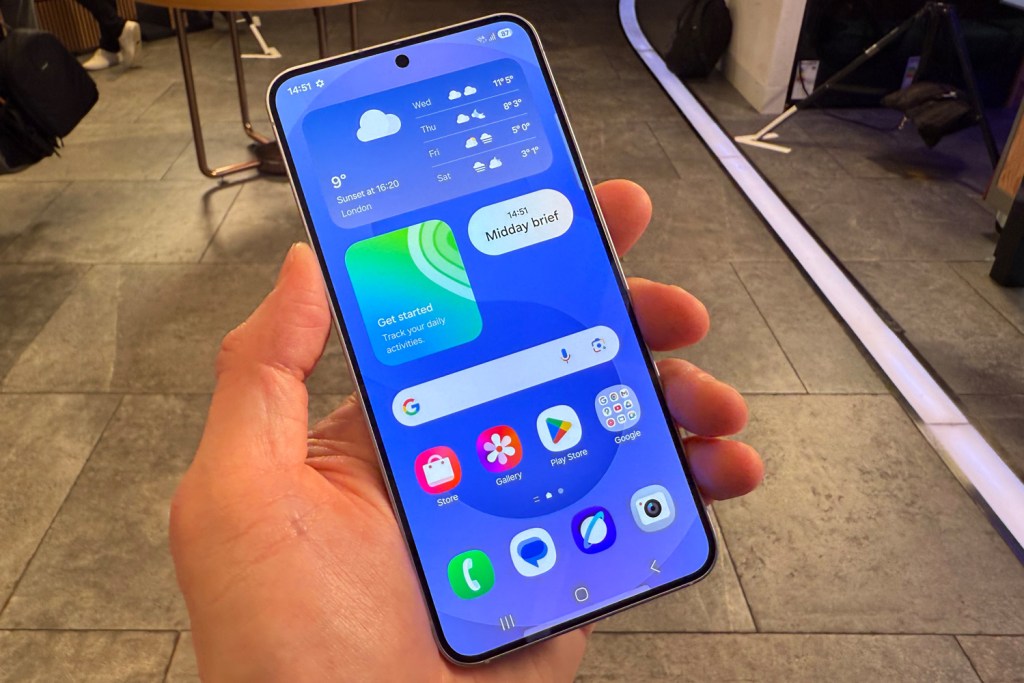
Based purely on what Samsung has shared about the Galaxy S25 so far, it seems like this year’s model will be a tough sell for those who pay attention to spec sheets. Faster processor and more memory aside, there’s basically nothing to separate it from last year’s Galaxy S24. That the design has only seen subtle changes only hammers that home. The S24 will almost certainly get the S25’s software additions at some point, too.
Samsung is likely hoping to convince those with older handsets to make a multi-generation leap, and banking on the fact existing Galaxy owners won’t jump ship to Android rivals with more enticing spec sheets. Personally I’d either save the cash and buy an S24 while it’s still in stock – or wait another year in the hope Samsung makes some meaningful hardware improvements.

